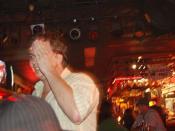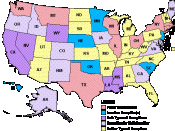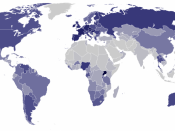Binge drinking is defined as "drinking large quantities of alcohol in one sitting, 5+ standard drinks for men and 4+ for women" (Ham & Hope, 2003, p. 720), and has been identified as the number one substance abuse problem in university life (Syre et al., 1997, cited in Morawska & Oei, 2005). However, definitions of binge drinking are complicated by the way 'binge drinking' is operationally defined therefore making it difficult to examine and compare college problem drinking (Clements, 1999, cited in Ham & Hope, 2003). Despite this, Baer (cited in Ham & Hope, 2003) reveals that definitions of problem or 'binge' drinking generally fit into one of two categories: drinking rates or levels, or negative alcohol-related consequences experienced.
Binge drinking is becoming a prevalent activity practised by all age groups, of concern though, is the serious nature of the binge drinking going on at university. Findings suggest that young adults aged between 18 and 24 are the highest consumers of alcohol, with 84.2%
of college students reporting heavy drinking episodes within the previous 90 days (Ham & Hope, 2003). This pattern is consistent with binge drinkers, who, in a study carried out in America by Ham and Hope, represented 44% of the college population and similarly 45% of Australian students (Davey, Davey & Obst, 2002). Reasons for the pervasiveness of heavy drinking in universities are numerous, however, Roche and Watt (1999) suggests alcohol in student life is prevalent as it often acts as a rites of passage and a socialisation tool. Despite the above findings, the nature and extent of binge drinking may vary on the basis of how research quantifies or defines binge drinking. This is demonstrated by White and Labouvie (cited in Ham & Hope, 2003) who claim that there is not sufficient number of measures...


